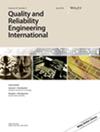利用优化的双支持向量机提高电动舵系统的健康状态识别能力
IF 2.8
3区 工程技术
Q3 ENGINEERING, INDUSTRIAL
引用次数: 0
摘要
安全性和可靠性是电动舵系统(ERS)不可或缺的先决条件,而健康状态识别则是强化和优化这些重要方面的有力技术。为解决这一问题,我们提出了一种适用于电动舵系统的健康状态识别多类模型 BAFAO-IPBT-TWSVM,该模型考虑了从智能电动舵系统测试平台获得的几个典型运行参数。双支持向量机(TWSVM)不仅具有传统基于 SVM 的故障诊断方法处理不平衡数据的能力,还引入了两个非平行超平面来取代传统 SVM 的单超平面。传统的 TWSVM 简化和精简了问题的解决,但仅限于二元分类问题。因此,利用改进的可分性原理,对类内距离和类间距离进行加权,生成最佳决策树结构,命名为改进的部分二叉树(IPBT),从而有效地将多分类问题分解为多个二元分类问题。一种名为 "基于蝙蝠算法的果蝇优化算法(BAFOA)"的新型智能算法被用于自适应优化 TWSVMi 每个子分类器的参数。这种策略性整合使模型在适应电动舵系统特性方面更加灵活,并提高了模型的准确性和鲁棒性。健康状态识别实验结果验证了所提模型在真实世界数据集下的性能。BAFOA-IPBT-TWSVM 的准确度、精度、TPR、TNR、F1-score、G-mean 和 Kappa 分别为 0.972、0.987、0.982、0.959、0.985、0.970 和 0.954。与其他九种模型相比,保留的 BAFOA-IPBT-TWSVM 能够识别健康状态,性能更优,为未来的舵维护方法提供了新的思路。本文章由计算机程序翻译,如有差异,请以英文原文为准。
Enhanced health states recognition for electric rudder system using optimized twin support vector machine
Safety and reliability represent indispensable prerequisites for electric rudder systems (ERS), while health states recognition serves as a potent technology that fortifies and optimizes these essential aspects. To address this problem, we present a health‐state recognition muti‐class model BAFAO‐IPBT‐TWSVM for ERS considering several typical operating parameters obtained from intelligent electric rudder system test platform. The twin support vector machine (TWSVM) not only possesses the ability of traditional fault diagnosis methods based on SVM to handle unbalanced data, but also introduces two non‐parallel hyperplanes to replace single hyperplane of traditional SVM. Traditional TWSVM simplifies and streamlines the problem‐solving, but it is limited to binary classification problem. Therefore, the improved separability principle weighting intra‐class distance and inter‐class distance generates the best decision tree structure named improved partial binary tree (IPBT) is to effectively decompose multi‐classification problem into multiple binary classification problems. A novel intelligent algorithms called bat algorithm‐based fruit fly optimization algorithm (BAFOA) is utilized to self‐adaptively optimize the parameters of each sub‐classifier TWSVMi . This strategic integration makes the model more flexible in adapting to the characteristics of electric rudder system and enhances the accuracy and robustness of the model. The performance of the proposed model is validated under real‐world datasets by the results of health states recognition experiments. The Accuracy, Precision, TPR, TNR, F1 ‐score, G‐mean, and Kappa of the BAFOA‐IPBT‐TWSVM are 0.972, 0.987, 0.982, 0.959, 0.985, 0.970, and 0.954 respectively. The reserved BAFOA‐IPBT‐TWSVM is capable of recognizing the health status with preferable performance compared with other nine models, which could introduce a novel idea for future rudder maintenance approaches.
求助全文
通过发布文献求助,成功后即可免费获取论文全文。
去求助
来源期刊
CiteScore
4.90
自引率
21.70%
发文量
181
审稿时长
6 months
期刊介绍:
Quality and Reliability Engineering International is a journal devoted to practical engineering aspects of quality and reliability. A refereed technical journal published eight times per year, it covers the development and practical application of existing theoretical methods, research and industrial practices. Articles in the journal will be concerned with case studies, tutorial-type reviews and also with applications of new or well-known theory to the solution of actual quality and reliability problems in engineering.
Papers describing the use of mathematical and statistical tools to solve real life industrial problems are encouraged, provided that the emphasis is placed on practical applications and demonstrated case studies.
The scope of the journal is intended to include components, physics of failure, equipment and systems from the fields of electronic, electrical, mechanical and systems engineering. The areas of communications, aerospace, automotive, railways, shipboard equipment, control engineering and consumer products are all covered by the journal.
Quality and reliability of hardware as well as software are covered. Papers on software engineering and its impact on product quality and reliability are encouraged. The journal will also cover the management of quality and reliability in the engineering industry.
Special issues on a variety of key topics are published every year and contribute to the enhancement of Quality and Reliability Engineering International as a major reference in its field.

 求助内容:
求助内容: 应助结果提醒方式:
应助结果提醒方式:


